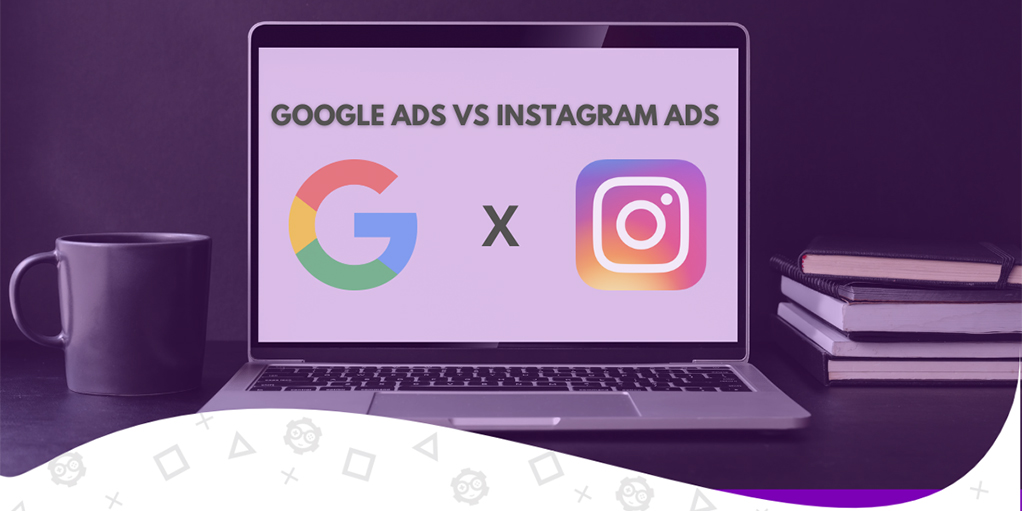In today’s competitive digital landscape, businesses must choose the right advertising platform to maximize their marketing efforts. Google Ads and Instagram Ads are two of the most popular advertising platforms offering unique benefits and features. While both are powerful tools for reaching targeted audiences, their approach, cost, and user engagement differ.
In this blog, we’ll explore the differences between Google Ads and Instagram Ads, helping you determine which platform best fits your business.
- Overview of Google Ads and Instagram Ads
Google Ads
Google Ads, formerly Google AdWords, is a pay-per-click (PPC) advertising platform that allows businesses to place ads on Google’s search engine results pages (SERPs), Google Display Network, and YouTube. Google Ads offers several ad formats, including search, display, and video ads, making it a versatile choice for reaching customers across various channels.
Instagram Ads
Instagram Ads, powered by Meta (formerly Facebook), allows businesses to display ads directly within users’ Instagram feeds, Stories, Explore, and Reels. As a visually-driven platform, Instagram Ads focus on engaging, image-rich content, appealing to users through dynamic visuals and storytelling.
- Audience Targeting: Search Intent vs. Interests
Google Ads: Search Intent
Google Ads primarily focuses on search intent, targeting users based on the keywords they are searching for. When someone types a specific query into Google, the platform displays ads that match the keywords in that query. This makes Google Ads highly effective for reaching potential customers looking for a product or service similar to your offer.
- Pro: High-intent leads, meaning users are more likely to be closer to making a purchase decision.
- Con: Competition for keywords can be intense, leading to higher costs for highly sought-after search terms.
Instagram Ads: Interest and Demographics
Instagram Ads target users based on interests, behaviors, and demographics. The platform collects data from user activities, such as the accounts they follow, the content they engage with, and their interactions on Facebook, to deliver highly personalized ads. Instagram Ads are excellent for brand awareness and capturing users’ attention with visually appealing content, even if they are not actively searching for your product.
- Pro: Excellent for building brand awareness and reaching users who may have yet to learn about your brand.
- Con: Users are less likely to have purchase intent than Google Ads, requiring more engaging and eye-catching content to drive conversions.
- Ad Formats and Creativity
Google Ads: Text and Display Ads
Google Ads offers a variety of ad formats, including search ads (text-based), display ads (image-based), and video ads (via YouTube). Search ads appear at the top of search results pages, while display ads are shown across Google’s Display Network, which includes millions of websites and apps.
- Search Ads: Text-based ads that rely heavily on keywords and ad copy effectiveness. They are less visually dynamic but offer a straightforward call-to-action (CTA).
- Display Ads: Visual ads that appear across a vast network of websites, giving businesses exposure to a broader audience.
Google Ads is ideal for businesses looking for direct response ads with clear CTAs, particularly in search ads where users search for specific information.
Instagram Ads: Visual-First Approach
Instagram Ads are highly visual and come in various engaging formats, including photo, carousel, story, and video ads. The platform is ideal for storytelling, showcasing products through imagery, and creating immersive experiences.
- Photo Ads: Single-image ads that appear in users’ feeds, ideal for showcasing products or services in a compelling visual.
- Carousel Ads: Allow businesses to showcase multiple images or videos in a single ad, perfect for demonstrating a series of products or telling a story.
- Story Ads and Reels: Short, vertical videos that blend seamlessly into users’ organic Stories or Reels, offering high engagement with a younger audience.
Instagram Ads are perfect for businesses that rely on creative storytelling and visuals to capture attention and build brand identity.
- Cost and ROI: PPC vs. CPM
Google Ads: Pay-Per-Click (PPC)
Google Ads primarily operates on a pay-per-click (PPC) model, meaning you only pay when someone clicks on your ad. The cost of running Google Ads depends on various factors, such as the competition for your chosen keywords and your bid amount. The more competitive the keywords, the higher the cost per click (CPC).
- Pro: You only pay when someone clicks on your ad, ensuring that your budget is spent on users who are more likely to convert.
- Con: For competitive industries, CPC can be high, reducing the cost-effectiveness of the campaign for small businesses with limited budgets.
Instagram Ads: Cost-Per-Mile (CPM)
Instagram Ads use cost-per-click (CPC) and cost-per-mile (CPM) models, meaning businesses can pay per click or for every 1,000 impressions. Instagram Ads tend to have lower costs than Google Ads, but the ROI depends mainly on the quality of the creative content and the engagement it generates.
- Pro: Instagram offers affordable options for businesses with smaller budgets, and the platform’s vast audience reach ensures that companies get high visibility.
- Con: The success of Instagram Ads depends heavily on how visually compelling your ad is, and the ROI might be shorter than Google Ads, where users have direct search intent.
- Which is Best for Your Business?
The choice between Google Ads and Instagram Ads depends on several factors, including your business goals, target audience, and budget.
Choose Google Ads if:
- You are targeting users who are actively searching for your products or services.
- You want to drive direct response and immediate conversions through search ads.
- You have a budget for competitive CPC rates, especially in industries with high search demand.
- Your business focuses more on providing solutions that fulfill immediate needs (e.g., services, high-demand products).
Choose Instagram Ads if:
- You want to build brand awareness and create visually appealing content.
- Your target audience is younger and highly engaged with social media platforms.
- You promote products or services that benefit from storytelling, showcasing, or lifestyle marketing.
- You have creative resources to produce visually compelling ads that attract attention in a crowded social media space.
Conclusion: Google Ads vs. Instagram Ads
Ultimately, the decision between Google Ads and Instagram Ads should align with your marketing objectives. Google Ads is an excellent platform for businesses looking to capture high-intent customers and drive conversions through search advertising. On the other hand, Instagram Ads excel at building brand awareness, fostering engagement, and reaching a visually-driven audience.
For many businesses, combining both platforms may provide the best results, allowing you to capture different segments of your target audience through diverse channels. By understanding the strengths and limitations of each platform, you can tailor your advertising strategy to maximize reach, engagement, and ROI.
To learn more or to acquire our services, please contact us at https://paypercampaign.com





